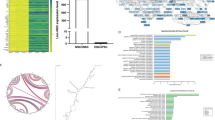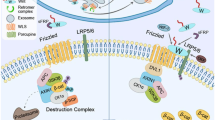Abstract
Cleft palate is one of the most common birth defects. Both environmental and genetic factors are involved in this disorder. Here, we investigated the function of Wnt10a in proliferation and apoptosis of mouse embryonic palatal mesenchymal (MEPM) cells. Expression of Wnt10a was down-regulated at both the mRNA and protein levels in transfected MEPM cells containing Wnt10a-specific small hairpin RNA (shRNA) plasmid. Down-regulation of Wnt10a inhibited cell proliferation and induced cell cycle arrest in the S phase in MEPM cells. Moreover, apoptosis was significantly increased in MEPM cells of Wnt10a gene silencing. Finally, the expression of β-catenin was markedly reduced in MEPM cells transfected with shRNA plasmid, indicating that the canonical Wnt/β-catenin signaling pathway was involved in the alterations of cell proliferation and apoptosis induced by Wnt10a knockdown. Thus, our findings reveal that Wnt10a regulates proliferation and apoptosis of MEPM cells at least partially through the canonical Wnt/β-catenin signaling pathway.






Similar content being viewed by others
References
Beaty TH, Hetmanski JB, Fallin MD, Park JW, Sull JW, McIntosh I, Liang KY, Vanderkolk CA, Redett RJ, Boyadjiev SA et al (2006) Analysis of candidate genes on chromosome 2 in oral cleft case-parent trios from three populations. Hum Genet 120:501–518
Cawthorn WP, Bree AJ, Yao Y, Du B, Hemati N, Martinez-Santibanez G, MacDougald OA (2012) Wnt6, Wnt10a and Wnt10b inhibit adipogenesis and stimulate osteoblastogenesis through a beta-catenin-dependent mechanism. Bone 50:477–489
Chiquet BT, Blanton SH, Burt A, Ma D, Stal S, Mulliken JB, Hecht JT (2008) Variation in WNT genes is associated with non-syndromic cleft lip with or without cleft palate. Hum Mol Genet 17:2212–2218
Christensen K, Juel K, Herskind AM, Murray JC (2004) Long term follow up study of survival associated with cleft lip and palate at birth. BMJ 328:1405
Dixon MJ, Marazita ML, Beaty TH, Murray JC (2011) Cleft lip and palate: understanding genetic and environmental influences. Nat Rev Genet 12:167–178
Han J, Xiao Y, Lin J, Li Y (2006) PDGF-C controls proliferation and is down-regulated by retinoic acid in mouse embryonic palatal mesenchymal cells. Birth Defects Res B Dev Reprod Toxicol 77:438–444
He F, Xiong W, Yu X, Espinoza-Lewis R, Liu C, Gu S, Nishita M, Suzuki K, Yamada G, Minami Y, Chen Y (2008) Wnt5a regulates directional cell migration and cell proliferation via Ror2-mediated noncanonical pathway in mammalian palate development. Development 135(23):3871–3879
Hsu RJ, Ho JY, Cha TL, Yu DS, Wu CL, Huang WP, Chu P, Chen YH, Chen JT, Yu CP (2012) WNT10A plays an oncogenic role in renal cell carcinoma by activating WNT/beta-catenin pathway. PLoS One 7:e47649
Hu X, Chen Z, Mao X, Tang S (2011) Effects of phenytoin and Echinacea purpurea extract on proliferation and apoptosis of mouse embryonic palatal mesenchymal cells. J Cell Biochem 112:1311–1317
Jin YR, Han XH, Taketo MM, Yoon JK (2012) Wnt9b-dependent FGF signaling is crucial for outgrowth of the nasal and maxillary processes during upper jaw and lip development. Development 139:1821–1830
Kagalwalla AF, Akhtar N, Woodruff SA, Rea BA, Masterson JC, Mukkada V, Parashette KR, Du J, Fillon S, Protheroe CA, Lee JJ, Amsden K, Melin-Aldana H, Capocelli KE, Furuta GT, Ackerman SJ (2012) Eosinophilic esophagitis: epithelial mesenchymal transition contributes to esophageal remodeling and reverses with treatment. J Allergy Clin Immunol 129(5):1387–1396.e7
Kokkinos MI, Wafai R, Wong MK, Newgreen DF, Thompson EW, Waltham M (2007) Vimentin and epithelial–mesenchymal transition in human breast cancer—observations in vitro and in vivo. Cells Tissues Organs 185(1–3):191–203
Lan Y, Ryan RC, Zhang Z, Bullard SA, Bush JO, Maltby KM, Lidral AC, Jiang R (2006) Expression of Wnt9b and activation of canonical Wnt signaling during midfacial morphogenesis in mice. Dev Dyn 235:1448–1454
Livak KJ, Schmittgen TD (2001) Analysis of relative gene expression data using real-time quantitative PCR and the 2(−Delta Delta C(T)) method. Methods 25:402–408
Menezes R, Letra A, Kim AH, Kuchler EC, Day A, Tannure PN, Gomes da Motta L, Paiva KB, Granjeiro JM, Vieira AR (2010) Studies with Wnt genes and nonsyndromic cleft lip and palate. Birth Defects Res A Clin Mol Teratol 88:995–1000
Meng L, Bian Z, Torensma R, Von den Hoff JW (2009) Biological mechanisms in palatogenesis and cleft palate. J Dent Res 88:22–33
Mossey P (2007) Epidemiology underpinning research in the aetiology of orofacial clefts. Orthod Craniofac Res 10:114–120
Mossey PA, Little J, Munger RG, Dixon MJ, Shaw WC (2009) Cleft lip and palate. Lancet 374:1773–1785
Ngai CW, Martin WL, Tonks A, Wyldes MP, Kilby MD (2005) Are isolated facial cleft lip and palate associated with increased perinatal mortality? A cohort study from the West Midlands Region, 1995–1997. J Matern Fetal Neonatal Med 17:203–206
Song L, Li Y, Wang K, Wang YZ, Molotkov A, Gao L, Zhao T, Yamagami T, Wang Y, Gan Q et al (2009) Lrp6-mediated canonical Wnt signaling is required for lip formation and fusion. Development 136:3161–3171
Tyler MS, Pratt RM (1980) Effect of epidermal growth factor on secondary palatal epithelium in vitro: tissue isolation and recombination studies. J Embryol Exp Morphol 58:93–106
Ueno S, Weidinger G, Osugi T, Kohn AD, Golob JL, Pabon L, Reinecke H, Moon RT, Murry CE (2007) Biphasic role for Wnt/beta-catenin signaling in cardiac specification in zebrafish and embryonic stem cells. Proc Natl Acad Sci U S A 104:9685–9690
Warner DR, Smith HS, Webb CL, Greene RM, Pisano MM (2009) Expression of Wnts in the developing murine secondary palate. Int J Dev Biol 53:1105–1112
Wehby GL, Cassell CH (2010) The impact of orofacial clefts on quality of life and healthcare use and costs. Oral Dis 16:3–10
Yao T, Yang L, Li PQ, Wu H, Xie HB, Shen X, Xie XD (2011) Association of Wnt3A gene variants with non-syndromic cleft lip with or without cleft palate in Chinese population. Arch Oral Biol 56:73–78
Zhu P, Chen G, You T, Yao J, Jiang Q, Lin X, Shen X, Qiao Y, Lin L (2010) High FFA-induced proliferation and apoptosis in human umbilical vein endothelial cell partly through Wnt/beta-catenin signal pathway. Mol Cell Biochem 338:123–131
Acknowledgments
This study was supported by a grant from the Science and Technology Project of Liaoning Province (grant no.: 2010225034).
Author information
Authors and Affiliations
Corresponding author
Electronic supplementary materials
Below is the link to the electronic supplementary material.
Supplemental Fig. 1
(JPEG 14 kb)
Supplemental Table 1
(DOC 45 kb)
Rights and permissions
About this article
Cite this article
Feng, C., Xu, Z., Li, Z. et al. Down-regulation of Wnt10a by RNA interference inhibits proliferation and promotes apoptosis in mouse embryonic palatal mesenchymal cells through Wnt/β-catenin signaling pathway. J Physiol Biochem 69, 855–863 (2013). https://doi.org/10.1007/s13105-013-0262-7
Received:
Accepted:
Published:
Issue Date:
DOI: https://doi.org/10.1007/s13105-013-0262-7




